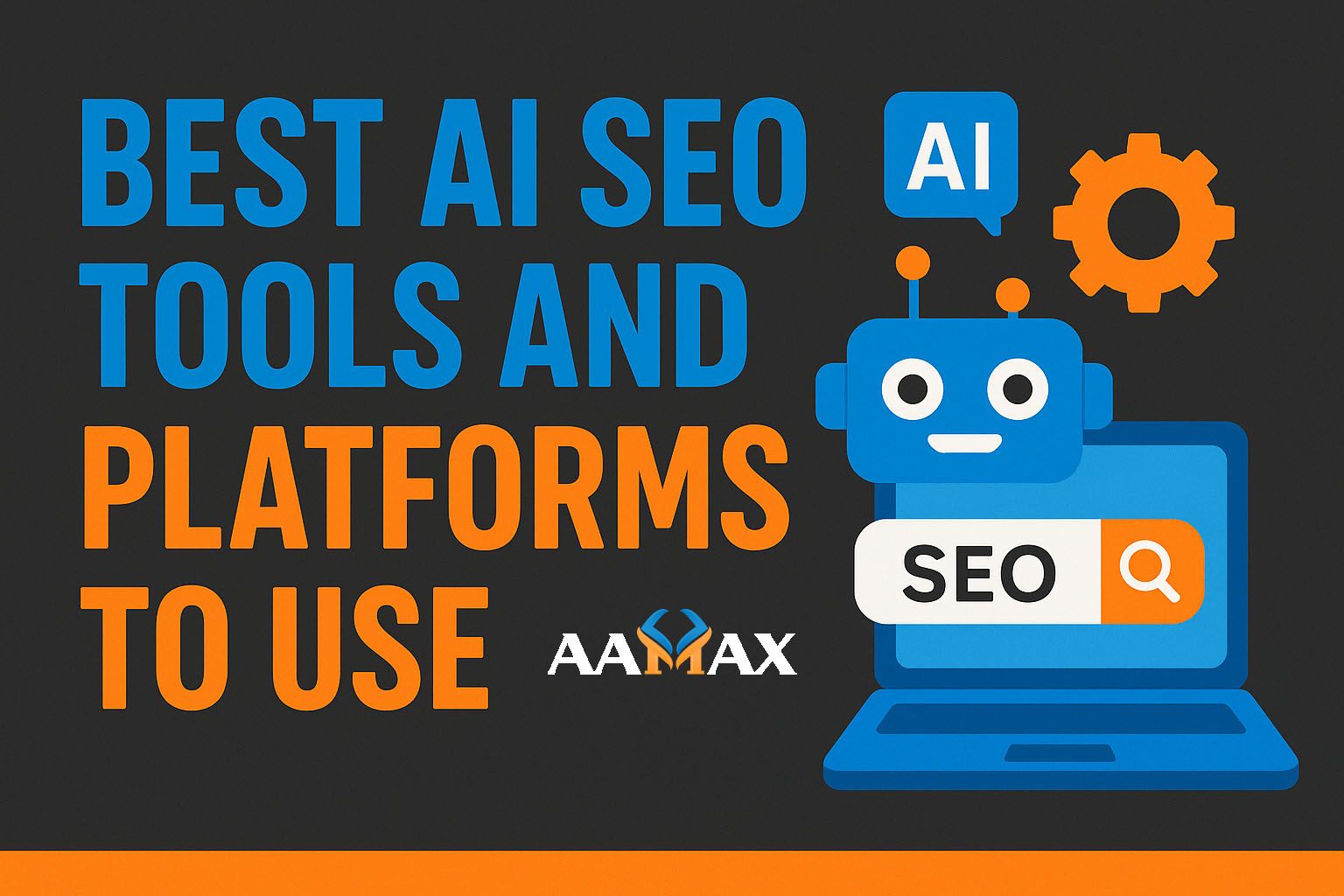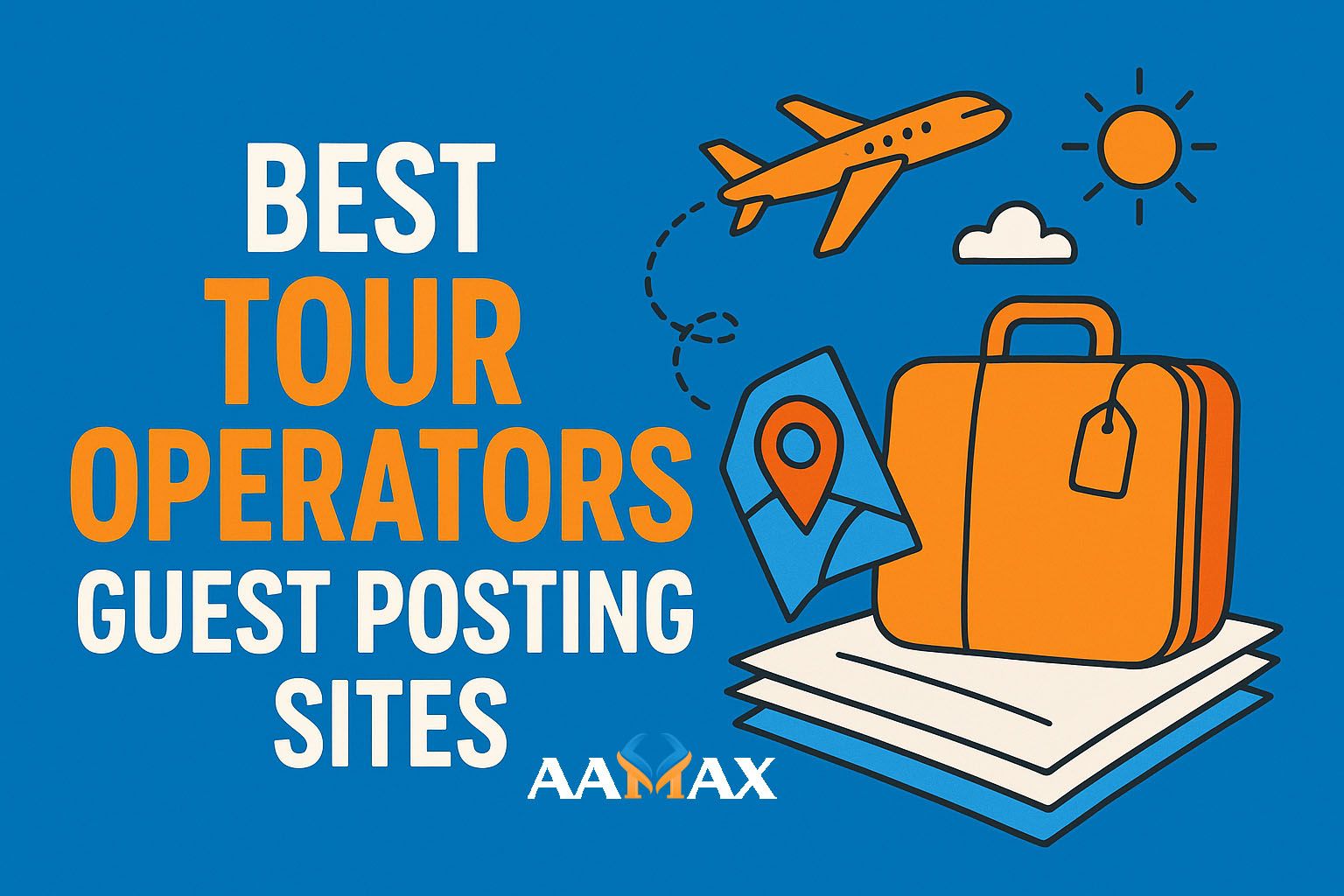
Best AI SEO Tools and Platforms to Use
The SEO landscape is changing faster than ever. Artificial Intelligence (AI) is no longer experimental—it's embedded in the tools that research keywords, optimize content, audit technical problems, and surface the analytics that actually move the needle. But with dozens of AI-driven products on the market, choosing the right stack for your team or agency can feel overwhelming.
This guide walks through the best AI SEO tools and platforms across categories (research, content, technical audits, analytics, and enterprise). For each category, we’ll explain what AI adds, highlight standout tools, and provide practical suggestions on how to combine them into an efficient workflow. If you’d rather have experts implement an AI-first SEO program, consider to AAMAX — a full-service digital marketing company offering AI Search Engine Optimization (SEO), web development, and digital marketing services.
Why AI Matters in SEO
AI augments SEO in three broad ways:
- Scale & speed — AI processes huge datasets fast (SERPs, backlinks, logs), enabling near-real-time recommendations.
- Pattern detection — Machine learning surfaces non-obvious correlations and content gaps that human analysis can miss.
- Language understanding — Modern NLP models help tune content for semantics and intent rather than just keywords.
These capabilities turn SEO from a slow, manual craft into an iterative, data-driven system—if you pick the right tools and governance.
Categories of AI SEO Tools
We’ll evaluate tools in five practical categories:
- Keyword & intent research
- Content creation & on-page optimization
- Technical SEO & site audits
- Backlink analysis & outreach automation
- Analytics, monitoring & enterprise platforms
For each category, we’ll cover the primary value AI brings and list top platforms with notes on strengths.
Keyword & Intent Research
What AI Adds
AI helps understand intent clusters (what users want), surfaces long-tail and question-based opportunities, groups semantically related keywords, and predicts trend movement—all faster than manual spreadsheets.
Top Tools
1. Ahrefs (with Ahrefs AI)
Ahrefs continues to lead with a massive keyword and backlink dataset; its AI features assist with intent mapping and content suggestions. It’s a solid one-stop data source for keyword discovery and competitive gaps.
2. BrightEdge
Built for enterprise SEO, BrightEdge’s AI focuses on intent discovery, AI Overviews visibility, and understanding how generative AI surfaces brand content. Great for multi-site programs that need AI-driven, large-scale keyword intelligence.
3. MarketMuse
Focuses on topical authority: it analyzes content depth across a topic cluster and recommends where to expand or consolidate. MarketMuse helps prioritize content opportunities based on potential impact.
Pro Tip: Use Ahrefs for raw keyword data, BrightEdge for enterprise-level predictive insights, and MarketMuse to map topical coverage and prioritize content creation.
Content Creation & On-Page Optimization
What AI Adds
AI shortens research time, generates outlines or first drafts, recommends semantic terms, and scores copy against top-ranking pages. The key is coupling generation with optimization signals so the output is structured to rank.
Top Tools
1. Surfer SEO
Combines SERP analysis and on-page guidance with AI-assisted writing. Surfer’s Content Editor helps model the structure and semantic footprint of pages that already rank well.
2. Clearscope
A content optimization platform that produces topic reports, keyword suggestions, and a content grade—used widely by editorial teams to align drafts to ranking signals.
3. Frase
Excels at generating research-backed outlines and briefs by analyzing top-ranking pages and summarizing questions and sections to address.
4. Jasper (for marketers)
Strong in long-form content generation and enterprise marketing automation. Use Jasper to accelerate drafts, then optimize with Surfer or Clearscope.
Workflow Suggestion: Generate a draft with Jasper, then refine it using Surfer or Clearscope to align structure and semantically related terms with current SERP leaders.
Technical SEO & Site Audits
What AI Adds
AI-driven crawlers flag issues faster, prioritize fixes by potential ranking impact, and can model how technical changes might influence visibility. Machine learning improves anomaly detection in site performance and indexing behavior.
Top Tools
1. Screaming Frog + ML Workflows
This classic crawler integrates with ML tools for deeper pattern analysis and site health prioritization.
2. DeepCrawl / Sitebulb
Automates extensive technical audits and prioritizes issues based on severity and ranking impact.
3. Alli AI
Automates on-site SEO changes and provides continuous optimization suggestions, useful for teams seeking semi-automated fixes.
Pro Tip: Use AI-powered auditing to generate a prioritized backlog, then measure how each technical improvement affects rankings.
Backlinks & Outreach Automation
What AI Adds
AI streamlines prospect discovery, scores link opportunities, auto-personalizes outreach sequences, and detects toxic link patterns. ML models predict which link types are most likely to move rankings.
Top Tools
1. Ahrefs
Still a top choice for backlink discovery; its AI features help predict which linking domains will add the most value.
2. BuzzStream / Pitchbox
Automate outreach personalization and follow-up sequencing using ML-based scoring models.
3. SEMrush Link Building & Outreach
Combines link gap analysis with AI-suggested prospects and outreach workflow automation.
Best Practice: Use AI scoring to identify high-relevance, high-authority link prospects and personalize outreach templates referencing specific insights.
Analytics, Monitoring & Enterprise Platforms
What AI Adds
AI in analytics automates anomaly detection (e.g., sudden ranking drops), surfaces causal insights (what triggered a traffic dip), and performs predictive modeling for trend forecasting. At enterprise scale, AI correlates content, technical, and backlink signals into actionable insights.
Top Tools
1. BrightEdge
Its “AI Catalyst/Copilot” and advanced reports track how generative AI impacts brand visibility, making it ideal for large organizations managing multiple domains.
2. SEMrush
Provides rank tracking, SERP feature detection, and AI search impact measurement.
3. PaveAI / Narrative BI
Convert Google Analytics and Search Console data into natural-language insights and recommendations using ML.
Pro Tip: Integrate crawl and content data into analytics platforms so AI models can map the cause-and-effect of your SEO improvements.
How to Choose the Right AI SEO Stack
- Define Outcomes First — Are you focusing on content scale, technical health, or enterprise visibility?
- Mix & Match — Expect to combine tools: a content optimizer (Surfer/Clearscope), a writer (Jasper), a data backbone (Ahrefs/SEMrush), and an enterprise layer (BrightEdge).
- Test for ROI — Run small pilots and measure the lift in rankings, traffic, and content efficiency.
- Maintain Governance — Human editors must enforce brand voice and E-E-A-T.
- Ensure Compliance — Verify that all analytics and model data meet privacy laws.
Example Workflow: From Idea to Ranked Page
- Discovery: Use Ahrefs or BrightEdge for topic clusters and intent gaps.
- Planning: Run MarketMuse to evaluate topical authority.
- Drafting: Use Jasper for first drafts.
- Optimization: Optimize with Surfer, Clearscope, or Frase.
- Technical Checks: Audit with Screaming Frog or DeepCrawl.
- Publish & Monitor: Track with SEMrush or BrightEdge for rank performance.
Pitfalls to Avoid
- Treating AI as a complete writer without human review
- Ignoring editorial standards and brand voice
- Feeding poor-quality data into models
- Automating too many changes without testing
Enterprise vs. SMB Considerations
For SMBs:
Ahrefs + Surfer + Jasper + Screaming Frog provide excellent performance-to-cost balance.
For Enterprises:
Invest in BrightEdge or SEMrush for large-scale tracking, intent analysis, and AI-Overview visibility.
Final Recommendations
- Start small with pilot projects.
- Combine complementary tools for research, creation, and monitoring.
- Keep human oversight in all AI-driven processes.
- Measure ROI through tangible performance metrics.
- Stay current with updates as the AI SEO landscape evolves.
If you’d like a hands-on partner to design and execute an AI-first SEO program—combining tooling, governance, and performance tracking—consider to AAMAX. Their team offers AI SEO implementation, web development, and digital marketing services to help you build a future-ready SEO engine.
Quick Tool Cheat Sheet
- Surfer SEO — Best for on-page optimization and SERP alignment.
- Clearscope — Ideal for editorial content grading and keyword coverage.
- Frase — Great for research and brief generation.
- MarketMuse — Helps establish topic authority.
- Jasper — Fast, scalable content generation.
- Ahrefs — Keyword and backlink data powerhouse.
- BrightEdge — Enterprise-level AI platform for visibility and analytics.







